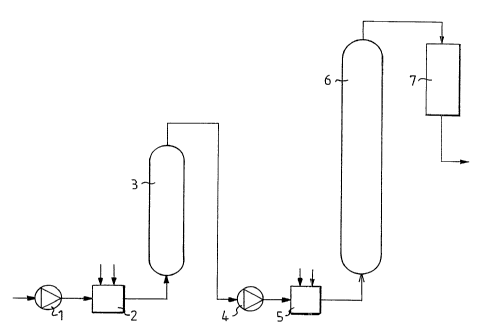Some of the information on this Web page has been provided by external sources. The Government of Canada is not responsible for the accuracy, reliability or currency of the information supplied by external sources. Users wishing to rely upon this information should consult directly with the source of the information. Content provided by external sources is not subject to official languages, privacy and accessibility requirements.
Any discrepancies in the text and image of the Claims and Abstract are due to differing posting times. Text of the Claims and Abstract are posted:
| (12) Patent: | (11) CA 2231048 |
|---|---|
| (54) English Title: | OXYGEN DELIGNIFICATION OF LIGNOCELLULOSIC PULP IN TWO STEPS |
| (54) French Title: | DELIGNIFICATION A L'OXYGENE, EN DEUX ETAPES, DE PATE LIGNOCELLULOSIQUE |
| Status: | Deemed expired |
| (51) International Patent Classification (IPC): |
|
|---|---|
| (72) Inventors : |
|
| (73) Owners : |
|
| (71) Applicants : |
|
| (74) Agent: | FETHERSTONHAUGH & CO. |
| (74) Associate agent: | |
| (45) Issued: | 2007-11-20 |
| (86) PCT Filing Date: | 1996-09-18 |
| (87) Open to Public Inspection: | 1997-05-01 |
| Examination requested: | 2003-08-22 |
| Availability of licence: | N/A |
| (25) Language of filing: | English |
| Patent Cooperation Treaty (PCT): | Yes |
|---|---|
| (86) PCT Filing Number: | PCT/SE1996/001154 |
| (87) International Publication Number: | WO1997/015715 |
| (85) National Entry: | 1998-03-03 |
| (30) Application Priority Data: | ||||||
|---|---|---|---|---|---|---|
|
A method of oxygen delignification of pulp from lignocellulosic material at
medium concentration in two steps. An extended
delignification is obtained in that the temperature in the first step is held
below 90 °C, that the difference in temperature between the steps
is lower than 20 °C. The pressure in the first step is 4-10 bar and in
the second step 2-5 bar, and the pressure in the first step is higher than
in the second step. The oxygen addition to the first step is high, 25-50
kg/ton pulp, that alkali is added only to the first step for obtaining
high alkalinity in the pulp, 25-50 kg alkali per ton pulp. The stay-time in
the first step is 10-30 min and in the second step 45-180 min.
La présente invention concerne un procédé de délignification à l'oxygène de pâte provenant d'une matière lignocellulosique, à une concentration moyenne, en deux étapes. On obtient une délignification plus poussée grâce au fait que, pour la première étape, la température est maintenue au-dessous de 90 DEG C et que la différence de température entre les deux étapes est inférieure à 20 degrés C. La pression est de 4 à 10 bars pour la première étape, de 2 à 5 bars pour la deuxième, et elle est plus élevée pour la première que pour la deuxième. L'addition d'oxygène à la première étape est forte, 25 à 50 kg par tonne de pâte. On ajoute de l'alcali seulement pour la première étape, afin d'obtenir une forte alcalinité de la pâte: 25 à 50 kg par tonne. Le temps de séjour est de 10 à 30 minutes à la première étape, 45 à 180 minutes à la deuxième.
Note: Claims are shown in the official language in which they were submitted.
Note: Descriptions are shown in the official language in which they were submitted.

For a clearer understanding of the status of the application/patent presented on this page, the site Disclaimer , as well as the definitions for Patent , Administrative Status , Maintenance Fee and Payment History should be consulted.
| Title | Date |
|---|---|
| Forecasted Issue Date | 2007-11-20 |
| (86) PCT Filing Date | 1996-09-18 |
| (87) PCT Publication Date | 1997-05-01 |
| (85) National Entry | 1998-03-03 |
| Examination Requested | 2003-08-22 |
| (45) Issued | 2007-11-20 |
| Deemed Expired | 2010-09-20 |
There is no abandonment history.
Note: Records showing the ownership history in alphabetical order.
| Current Owners on Record |
|---|
| VALMET FIBERTECH AKTIEBOLAG |
| Past Owners on Record |
|---|
| BOKSTROM, MONICA |
| MELLANDER, PIA |
| NORDEN, SOLVEIG |
| SUNDS DEFIBRATOR INDUSTRIES AB |